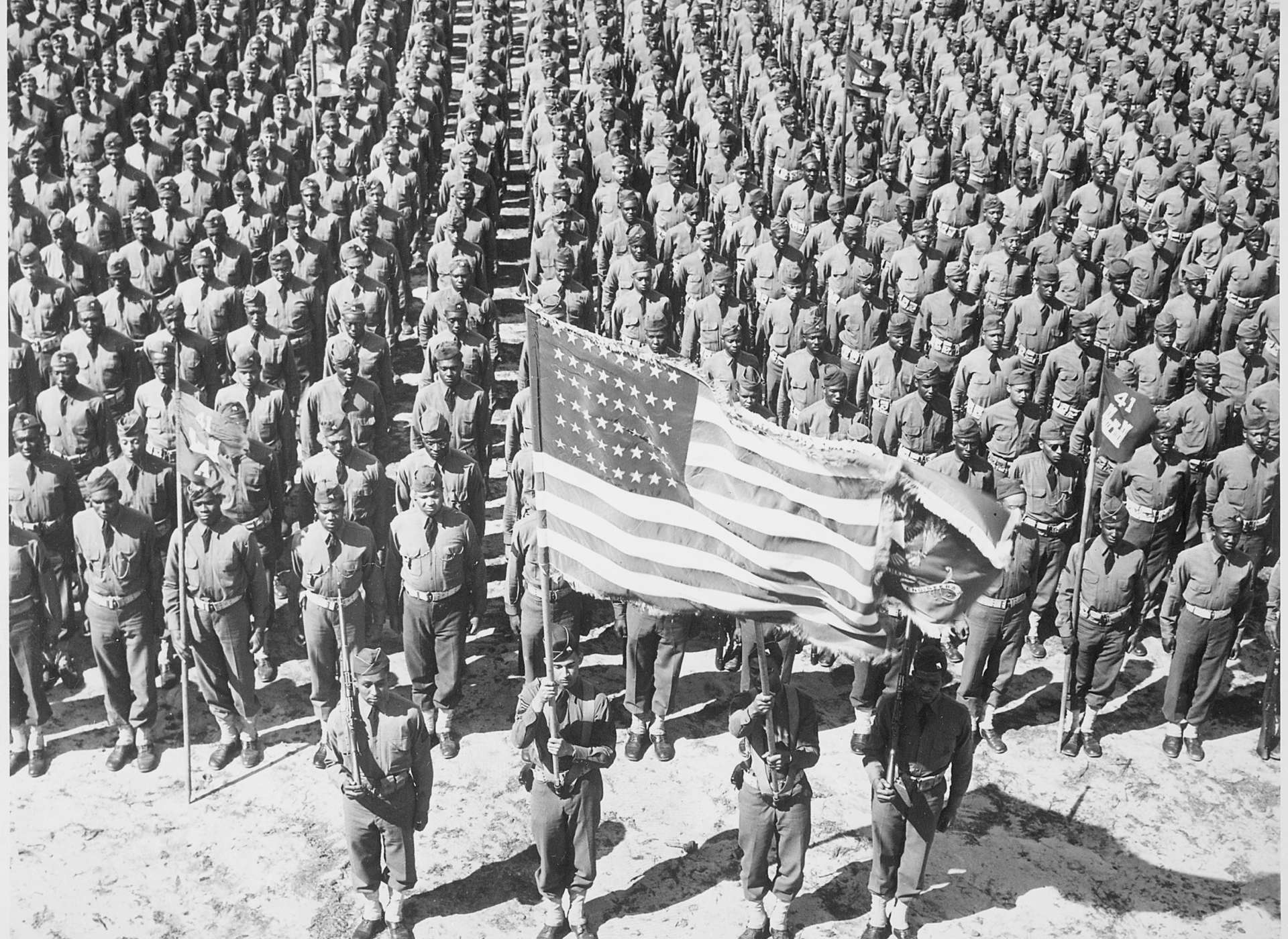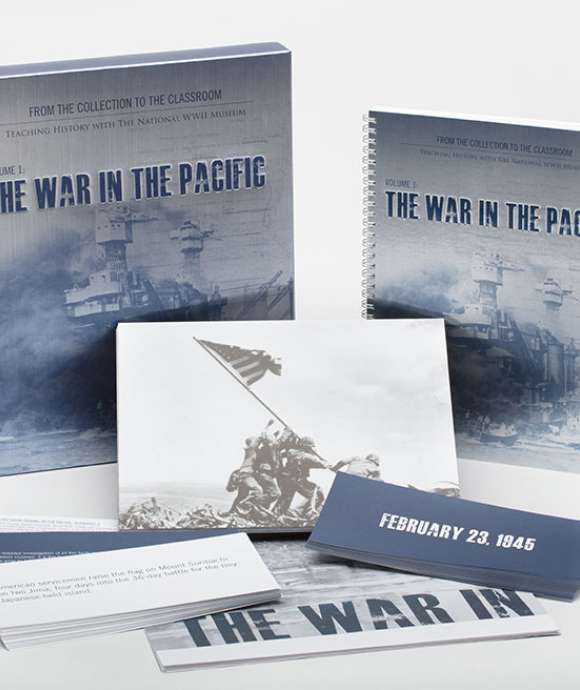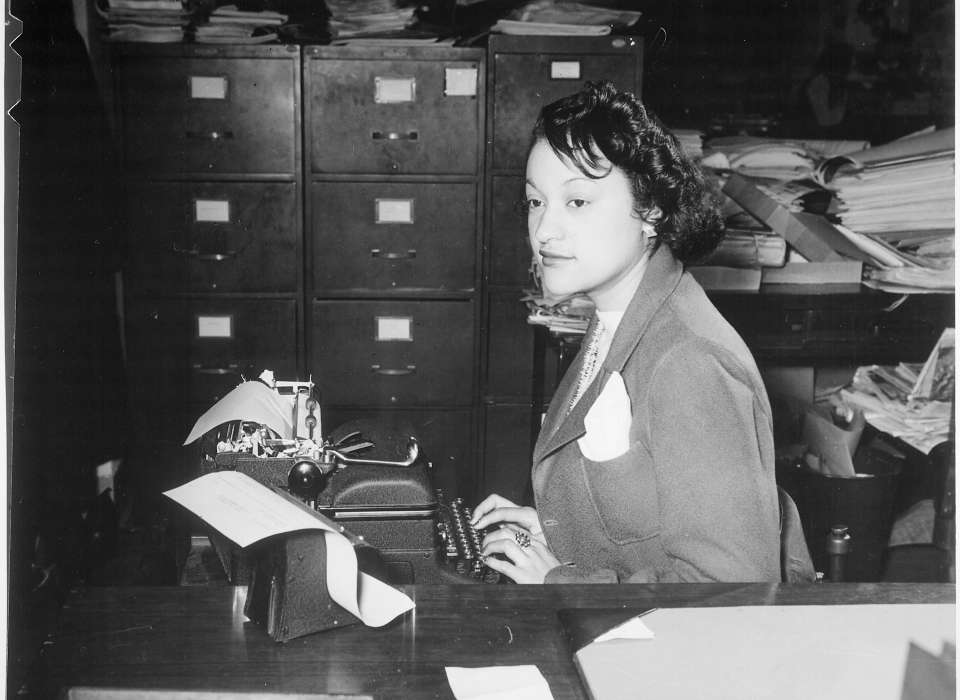Primary Image: (Image: National Archives, 208-NP-3F-3.)
AFRICAN AMERICANS ON THE HOME FRONT DURING WORLD WAR II
During World War II, African Americans made tremendous sacrifices in an effort to trade military service and wartime support for measurable social, political, and economic gains. As never before, local black communities throughout the nation participated enthusiastically in wartime programs while intensifying their demands for social progress. The struggle for African American first-class citizenship during this period was primarily waged in the workplace and training facilities throughout the nation. In particular, black colleges and universities made vital contributions to the defense program and, on a state level, directed training facilities and organized the African American war effort. In total, 75 black colleges and universities participated in the National Defense Program in some way.
By 1942, thousands of African Americans had enrolled in pre-employment courses at historically black colleges and universities (HBCUs) throughout the South. Nearly 30 black colleges offered 50 new courses that covered topics such as mechanical arts, radio engineering, tool engineering, welding, electronics, boat building, nursing, sheet metal work, photography, internal combustion engines, production management, and nutrition. Students received training in occupations that reflected a shortage of personnel in regional areas. Sixty-five black colleges participated in federal programs such as the Engineering, Science, and Management War Training (ESMWT) program. Twelve of those institutions had direct contracts with the federal government and offered a total of 74 courses in physics, mathematics, management, engineering, and chemistry. Overall, about 80 percent of black colleges and universities changed their curricula to offer defense-related courses and training for the war effort.
The federal government also vigorously solicited the support of HBCUs in numerous programs like the War Bond and Stamp Savings program and the Army Enlisted Reserve Corps, which was a precursor to the United States Army Reserve. In addition to thousands of Africans Americans, more than 50,000 non-African-American students throughout the South were registered in defense-related training programs. African Americans received valuable training in skilled and unskilled occupations that qualified them to work in numerous war-related industries. Though African Americans eagerly sought these defense-training program opportunities, many employers in the South avoided hiring blacks for fear of social unrest and mass strikes. In response, the War Manpower Commission regional office in Dallas, Texas, directed black trainees throughout the Southwest to seek employment at shipyards and defense plants located in the North and West.
During the war, Americans routinely sang “God Bless America” and the “Star Spangled Banner” and posted signs and American flags in support of troops and war-related programs. However, fervent displays of patriotism did not include the support of black troops. During this period racial violence against African American soldiers was common near military installations in the South. Shortly after the Japanese attack on Pearl Harbor, for example, a race riot broke out between African American GIs, civilians, and the local police in Alexandria, Louisiana, when a white military policeman struck a black soldier in front of a crowded movie theater. Because of such incidents, black leaders, educators, and the black press believed that building morale in the black community was even more essential. Not only would the black community benefit socially and politically from training programs and increased employment opportunities, but HBCUs would also receive much-needed financial and technical support from the federal and state governments.
Many black leaders and organizations such as the National Association for the Advancement of Colored People (NAACP) were acutely aware and concerned about African American disaffection for the war. Rightly so, black Americans had little to celebrate, considering that many of them were barred from civil defense training programs and jobs, as Jim Crow philosophy permeated the branch services of the Army, Navy, and Marines, and African Americans who suffered from maltreatment and assaults at the hands of whites had no recourse in the justice system. In fact, this attitude was representative of the mood in the black community throughout the nation. To combat this pessimistic atmosphere, the Research Branch of the Special Service Division, US Army Forces, released a report entitled, “Attitudes of the Negro Soldier.” The report suggested that special efforts be established to assign black troops to important military duties and that there be an increased flow of news about African American military achievements both in combat and in training. This increase in the flow of information would include a steady focus on enemy racial doctrine. All of these suggestions were intended to emphasize to African Americans the importance of winning the war.
The contradiction between fighting to sustain democracy throughout the world and experiencing the humiliation of Jim Crow laws, second-class citizenship, and exclusion from wartime job training programs at home understandably proved too great for many African Americans. Although antiwar and antimilitary sentiment did not reflect the rhetoric of the general population or mainstream black leaders, the feelings of individuals such as C.L.R. James represented how many black soldiers and civilians felt. James proclaimed:
"Why should I shed my blood for Roosevelt’s America, for Cotton Ed Smith and Senator Bilbo, for the whole Jim Crow, negro-hating South, for the low-paid, dirty jobs for which negroes have to fight, for the few dollars of relief and the insults, discrimination, police brutality, and perpetual poverty to which negroes are condemned even in the more liberal North?"
C.L.R. James

On parade, the 41st Engineers at Ft. Bragg, North Carolina, in color guard ceremony.
(Image: National Archives and Records Administration, 535822.)
Many of these individuals resisted supporting the war by refusing to support national defense programs or contribute to the national war chest. At Howard University, many students linked wartime support to the civil rights movement and began to participate in sit-ins and demonstrations that protested segregationist policies of restaurants, department stores, and drugstores throughout the Washington, DC, area. In the minds of many young African Americans, the notion of fighting for freedom and democracy in Europe as second-class citizens only angered and insulted them.

Like this article? Read more in our online classroom.
From the Collection to the Classroom: Teaching History with The National WWII Museum
While World War II represents a benchmark in the modern civil rights movement, it also reflects a decisive moment in the personal and collective histories of millions of African Americans throughout the South as they sought to escape white supremacy and oppression in pursuit of employment and enfranchisement opportunities. Thus, the contributions of African Americans to the Home Front during the war became a key factor in America’s arsenal of democracy and its ability to defeat its enemies.
Cite this article:
MLA Citation:
APA Citation:
Chicago Style Citation:








